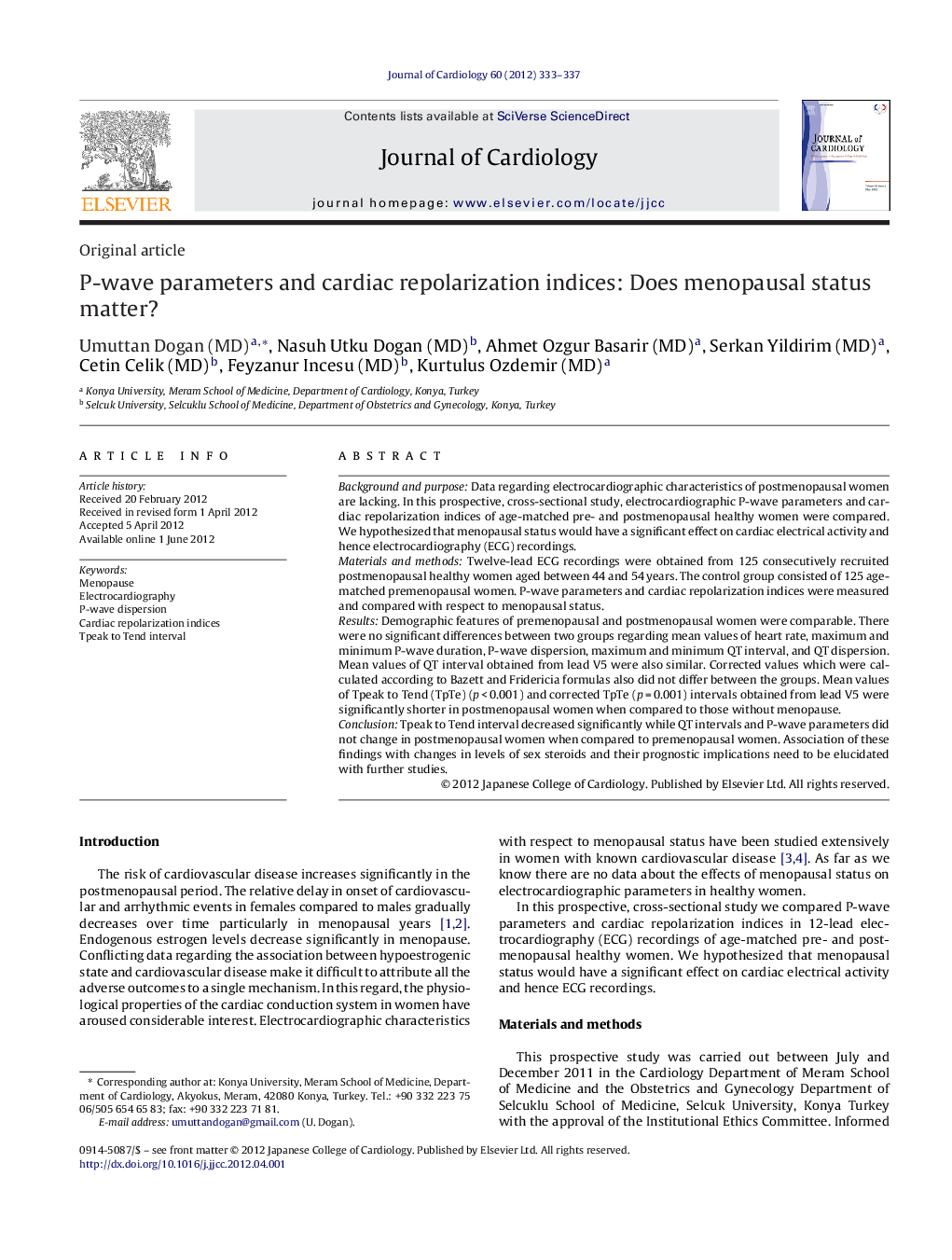| Article ID | Journal | Published Year | Pages | File Type |
|---|---|---|---|---|
| 2963157 | Journal of Cardiology | 2012 | 5 Pages |
Background and purposeData regarding electrocardiographic characteristics of postmenopausal women are lacking. In this prospective, cross-sectional study, electrocardiographic P-wave parameters and cardiac repolarization indices of age-matched pre- and postmenopausal healthy women were compared. We hypothesized that menopausal status would have a significant effect on cardiac electrical activity and hence electrocardiography (ECG) recordings.Materials and methodsTwelve-lead ECG recordings were obtained from 125 consecutively recruited postmenopausal healthy women aged between 44 and 54 years. The control group consisted of 125 age-matched premenopausal women. P-wave parameters and cardiac repolarization indices were measured and compared with respect to menopausal status.ResultsDemographic features of premenopausal and postmenopausal women were comparable. There were no significant differences between two groups regarding mean values of heart rate, maximum and minimum P-wave duration, P-wave dispersion, maximum and minimum QT interval, and QT dispersion. Mean values of QT interval obtained from lead V5 were also similar. Corrected values which were calculated according to Bazett and Fridericia formulas also did not differ between the groups. Mean values of Tpeak to Tend (TpTe) (p < 0.001) and corrected TpTe (p = 0.001) intervals obtained from lead V5 were significantly shorter in postmenopausal women when compared to those without menopause.ConclusionTpeak to Tend interval decreased significantly while QT intervals and P-wave parameters did not change in postmenopausal women when compared to premenopausal women. Association of these findings with changes in levels of sex steroids and their prognostic implications need to be elucidated with further studies.
